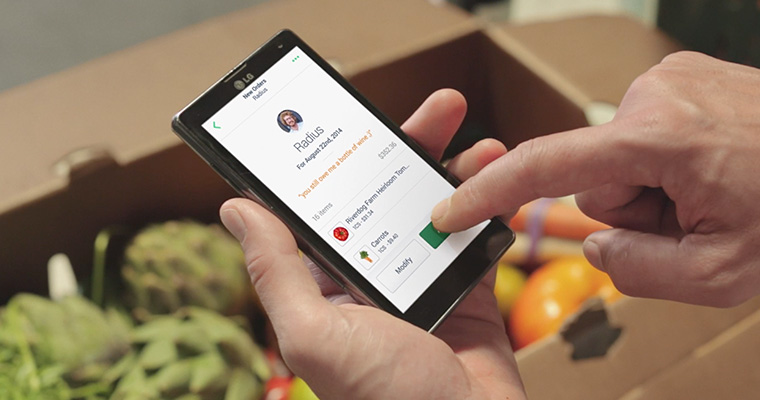Guest post by Lawrence Williams, Chairman of the Board – United States Healthful Food Council
If you are the kind of person who cares about what you eat and tries to buy local, organic and sustainable when possible, the good news is that the number of farmers’ markets, roadside stands and other local vendors have risen substantially in recent years. While this is welcome news, it is easy to overlook the fact that direct-to-consumer sales still make up less than 1 percent of agricultural sales. The remainder are controlled by intermediaries,such as food manufacturers and foodservice companies, and distributed through grocers, retail outlets, restaurants and institutional foodservice establishments. These power buyers have much more influence and control over the market, and unfortunately tend to be extremely sensitive to price.
One segment of the industry whose market share and influence continues to grow is foodservice. The foodservice sector is loosely defined as anyone in the business of serving meals. The foodservice sector has traditionally been comprised of restaurants and institutional dining, such as schools, hospitals and corporate cafeterias, which have increasingly been outsourced to large contract foodservice operators. With over $641 billion in retail sales in 2014, foodservice is BIG business.
Foodservice operations are notorious for being exceptionally challenging with intense competition, small margins, unskilled laborers and over-extended management. Given these operational challenges, the last thing chefs want to do is complicate their lives by sourcing from a lot of small suppliers and purveyors. Despite the fact that these suppliers are typically the best sources for local, organic and sustainably raised foods.
As a result, the “path of least resistance” has traditionally been using massive “broadliners”, such as Sysco and US Foods, and purchasing industrially-grown produce , factory farmed meats and lowest price/quality, highly processed commodity products. Further exacerbating the situation, the lack of transparency in foodservice provides significantly less incentive or consumer pressure to “do the right thing.”
Fortunately, there are some innovative foodservice entrepreneurs who are leveraging technology with the potential to revolutionize, the traditionally conventional food industry. New entrants include better-for-you chains such as The Plant and Taziki’s Cafe, and prepared meal delivery companies such as Sprig and Power Supply. (More on this in Part II and III.)
Making the REAL choice, the easy choice
Recognizing these market dynamics, the United States Healthful Food Council (USHFC) launched REAL Certified to audit and certify foodservice operators for their utilization of nutrition and sustainability best practices. Modeled after the green building certification program LEED, REAL stands for Responsible Epicurean and Agricultural Leadership.
In working alongside restaurateurs and chefs, we have seen a growing trend in incorporating sourcing practices into marketing and consumer messaging. Listing local suppliers on menus and highlighting the quality of ingredients are just a couple of ways that restaurateurs are differentiating themselves from competitors. This is in part due to consumer demands for transparency in both what’s in their food and its origins.
Since 2013, the USHFC has certified hundreds of dining establishments in over 20 states, ranging from quick-serve restaurants (QSR) through fine-dining, as well corporate dining facilities and institutional foodservice operations. In doing so, we have been able to identify specific key performance indicators (KPIs) that are highly correlated with broader industry best practices. Two of the most important KPIs are direct sourcing and scratch-based cooking.
Unfortunately, providing customers with high quality and sustainably sourced food requires navigating a maze of growers, producers, distributors and suppliers, constantly comparing costs and managing ongoing transactions. And the lack of transparency in procurement contributes to operational inefficiencies and compromises foodservice operators’ ability to focus on culinary values.
Sourcery: One-click direct ordering from farms
One of the major impediments to sourcing from small farms instead of factories is the industry’s legacy of complex and antiquated ordering and billing systems. REAL Certified recently announced that it was partnering with a next generation foodservice payments and commerce platform called Sourcery, which helps restaurants, caterers, universities and corporate kitchens order and pay for food from local, regional and national suppliers. Improving the efficiency of kitchen operations allows foodservice operators to spend more time preparing fresh, wholesome food.
Sourcery helps to remove time and asymmetrical information constraints, which are two of the primary constraints that prevent chefs and foodservice operators from doing the ‘right thing’ with respect to consumer health and sustainability. Linking Sourcery’s open record of orders and sources across the foodservice marketplace to a third-party certification process will help align consumer’s health and sustainability values not only with their foodservice providers, but also with the business interests of suppliers and distributors.
Foodservice Transparency and the future of dining
Foodservice trends clearly indicate that consumers are increasingly looking for transparency about the foods they consume. REAL Certified provides consumers with a simple method to identify foodservice providers that share their values, and Sourcery gives foodservice providers a powerful tool to easily identify and source the highest quality ingredients. By combining the two, our hope is that REAL food will become the new “path of least resistance.”
Coming next:
Part II: The Future of Dining: Is the Restaurant and Foodservice Industry Ripe for Disruption?
Part III: Redefining the Value Meal
 Lawrence Williams is an entrepreneur who is passionate about technology, food and health. He has dedicated his career to developing public-private partnership solutions to some of the world’s most vexing problems. Most recently, Lawrence helped Elon Musk and SpaceX collaborate with NASA to develop a domestic commercial crew and cargo program to replace the Space Shuttle. Prior to SpaceX, he was the lead for wireless pioneer Craig McCaw and Bill Gates’ Teledesic in negotiating the radio frequency access to make broadband access ubiquitous through the use of low-Earth orbiting satellites.
Lawrence Williams is an entrepreneur who is passionate about technology, food and health. He has dedicated his career to developing public-private partnership solutions to some of the world’s most vexing problems. Most recently, Lawrence helped Elon Musk and SpaceX collaborate with NASA to develop a domestic commercial crew and cargo program to replace the Space Shuttle. Prior to SpaceX, he was the lead for wireless pioneer Craig McCaw and Bill Gates’ Teledesic in negotiating the radio frequency access to make broadband access ubiquitous through the use of low-Earth orbiting satellites.






